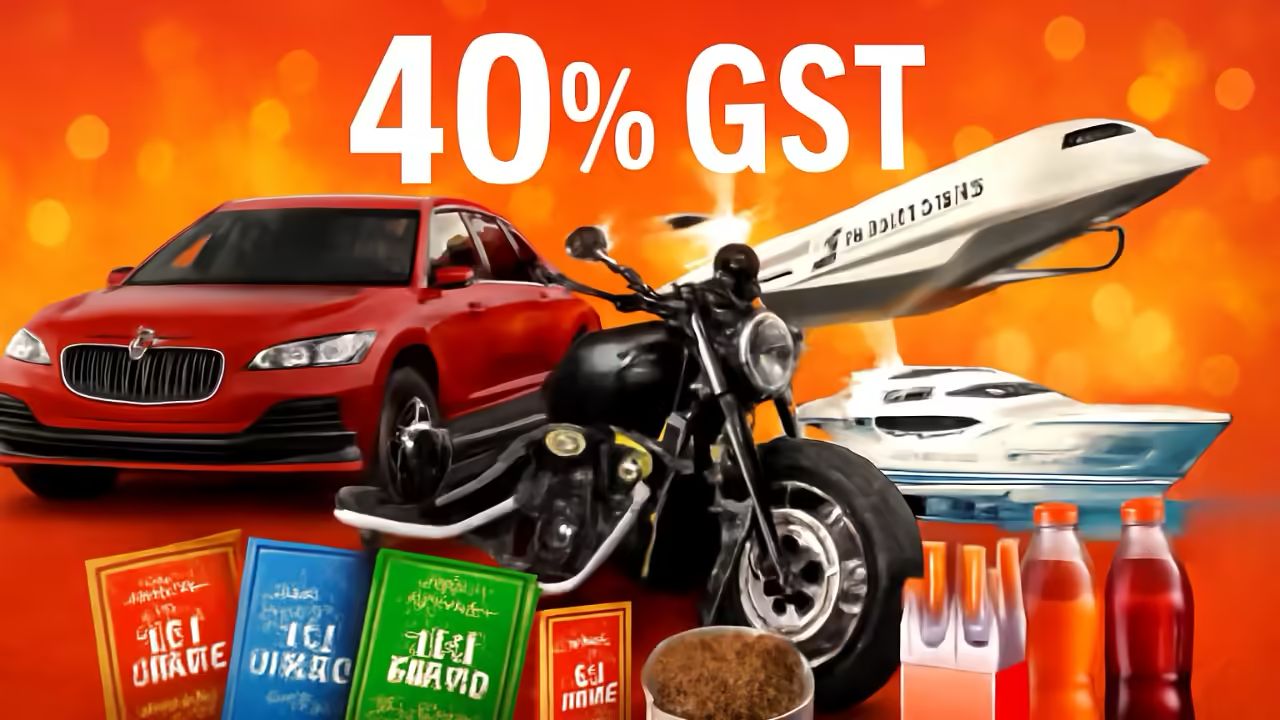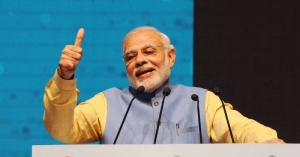Centre Revises GST Rates: 40% Tax on Tobacco, Cold Drinks, Aircraft, and Luxury Goods

New Delhi, Sept 22, 2025 The central government on Monday unveiled a major overhaul of the Goods and Services Tax (GST) framework, introducing sweeping changes that include higher taxes on certain “sin” and luxury goods, while reducing rates on a large number of essential items. Under the revised GST structure, the government has simplified tax slabs, cutting them from four – 5 percent, 12 percent, 18 percent, and 28 percent – to just two: 5 percent and 18 percent. This streamlining aims to make compliance easier for businesses and provide greater clarity for consumers. In addition to the standard GST slabs, a separate 40 percent tax has been imposed on sin and luxury goods. Sin goods, which are considered harmful to health, now fall under this top bracket to discourage consumption. Among these, pan masala, gutkha, cigarettes, tobacco, and zarda will attract a 40 percent cess in addition to applicable GST. The additional cess will remain in place until outstanding cess-linked loans are cleared. Cold drinks and aerated beverages containing sugar will also be taxed at 40 percent. These items previously attracted 28 percent GST plus a 12 percent cess, meaning the net tax burden remains largely unchanged for consumers. Luxury items and recreational services have seen similar hikes. Race clubs, leasing services, casinos, horse racing, and lotteries are now subject to a 40 percent tax. Tickets for major sporting events, including the IPL, have also been brought under the 40 percent tax bracket. Aircraft purchased for personal use will face a 40 percent GST, up from the previous 28 percent GST plus a 3 percent cess. The tax on high-capacity motor vehicles has also been revised. Motorbikes with engine capacities above 350 cc will now attract 40 percent GST, potentially increasing prices for high-end models. Likewise, petrol vehicles with engine sizes over 1,200 cc and length above 4 meters, as well as diesel vehicles over 1,500 cc and 4 meters, will see a 40 percent tax. However, these vehicles were previously taxed at 50 percent (28 percent GST plus cess), meaning the new rates could result in a marginal reduction in overall cost for buyers of larger vehicles. While taxes on sin and luxury goods have increased, the reform simultaneously eases the burden on essential items. GST rates have been reduced on approximately 370 products, including everyday necessities and life-saving medicines. The government expects these changes to boost consumers’ disposable income and stimulate demand across the economy. Union Finance Minister Nirmala Sitharaman highlighted that the new GST framework is designed to simplify taxation, reduce compliance hurdles, and improve economic efficiency. “These reforms aim to inject roughly ₹2 lakh crore into the economy, benefitting both businesses and consumers,” she said, emphasizing that the changes balance revenue generation with social responsibility. The GST overhaul reflects the government’s dual focus: curbing consumption of harmful or luxury products while easing the tax burden on essential goods to support household budgets. Market analysts predict that while luxury and sin goods may see modest price adjustments, everyday consumer goods and medical supplies will become more affordable, potentially driving higher consumption in the coming months.




